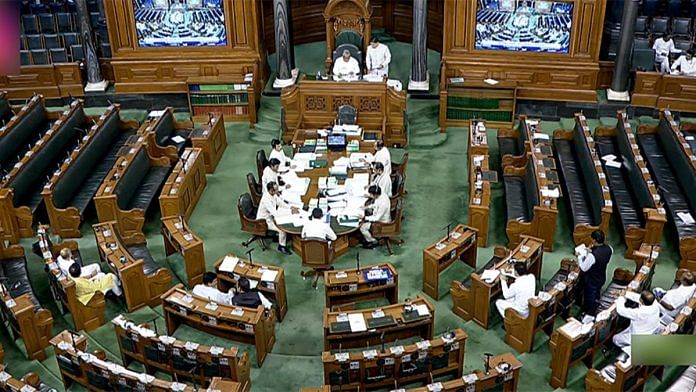New Delhi: The Union government’s National Research Foundation (NRF) Bill 2023, which was introduced in Lok Sabha Friday, aims to “end IITs’ monopolised benefit of funding” and give state universities equitable access to research funds from philanthropists, industries and private donors.
The NRF is a key recommendation of the National Education Policy (NEP) 2020, which envisaged a high-level body to provide strategic direction and coordination of scientific research in India.
If approved, the bill will pave the way to establish NRF that will seed, grow and promote Research and Development (R&D) and foster a culture of research and innovation throughout India’s universities, colleges, research institutions, and R&D laboratories. It will not be limited to just the elite list of the Indian Institutes of Technology.
“We want to end the IITs’ monopolised benefit of funding and provide equal opportunities to state institutes and students with lesser privilege,” a senior official from the Department of Science and Technology (DST) told ThePrint.
The NRF will function as an apex body to provide high-level strategic direction of scientific research in the country, according to the recommendations of the NEP, at a total estimated cost of Rs 50,000 crore during five years (2023-28).
The main intent behind NRF is to create a corpus of funds from industries, philanthropists and donors, which can then be used to bridge the gap in access to financial resources for state universities, ThePrint has learnt.
Though national institutes and learning centres will continue to have access to the funds, the focus, however, will be to give more access to state universities, as the national universities already get a lot of alumni and philanthropic funds, officials said.
Currently, most of the DST’s funding towards research projects goes to elite institutes like the IITs, which also attract funds from other sources due to their global reputation and excellence in research. This has helped IITs build world-class infrastructure and excel in research, while tier-II universities are left behind in a vicious cycle, where they lack the resources to build capacity that would attract industry funding.
Also Read: How IITs & other top science institutes are trying to boost mental health on campus
Funding sources and distribution
There is currently no mechanism through which the government science bodies can accept research funds from private entities, the DST official quoted earlier, told ThePrint.
The estimated cost of setting up and running the NRF for five years (2023-28) is Rs 50,000 crore. Of this, the NRF will receive 10,000 crore from the central government over the next five years, apart from the 4,000 crore already allocated to the Science and Engineering Research Board (SERB). The remaining 36,000 crore will be from private bodies like industries, philanthropists and donors.
The NRF may also accept Corporate Social Responsibility (CSR) funds in the future. This fund will then be used to fund research in state universities, particularly at the post-doctoral level.
The NRF will identify priority areas of research based on national needs and global trends, and allocate funds accordingly. The aim is to target smaller universities and hand-hold them to improve their research capabilities, senior officials in the science ministry told ThePrint.
The officials added that the government has been studying models of research funding bodies from around the world to make the best possible model.
Meanwhile, all the existing funding schemes from the science ministries will continue to function as is, the officials said.
A coordinated funding effort will also ensure that researchers do not work in silos, and that funds are not wasted by multiple groups working separately on similar projects. Not only will NRF aim at bridging the gap in funding, but also promote industry collaborations and translational research.
Structure and functions of NRF
The formation of NRF has been under discussion since 2019. The Department of Science and Technology will be the administrative department of NRF, which will be governed by a board consisting eminent researchers and professionals across disciplines.
The Prime Minister will be the ex-officio president of the board and the Union ministers of science & technology and education will be the ex-officio vice-presidents.
NRF’s functioning will be governed by an executive council chaired by the principal scientific adviser to the Government of India.
The Bill will also repeal the SERB established by an Act of Parliament in 2008 and subsume it into NRF, which has an expanded mandate and covers activities over and above the activities of SERB.
The governing board of 16 members will include five representatives from industries, two from scientific institutes, one researcher from a social science background, six research experts and two members from the Prime Minister’s Science, Technology and Innovation Advisory Council (PM-STIAC).
This body will set research priorities. Industries that want to fund research to solve specific industry-related problems will have access to a wider network of research institutes to choose from. To attract such funds for the NRF, the government will now have to work towards improving the infrastructure capabilities of state institutions.
(Edited by Richa Mishra)
Also Read: Bill diluting IIMs’ autonomy passed in Lok Sabha, Pradhan says institutes ‘not private property’



